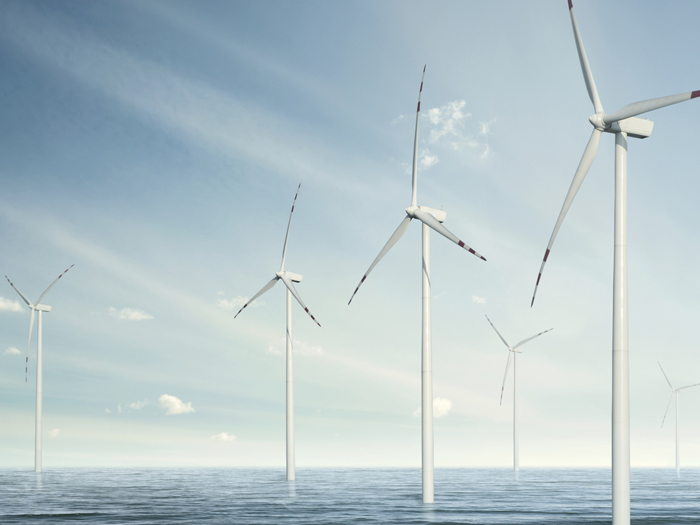Reducing Cat Risks
Wind Turbines Slow Down Hurricane Winds

Off the New York coastline would be a perfect place for an array of wind turbines, according to a Stanford professor. It would not only offer clean energy to the Big Apple but it would protect it the next time a Superstorm Sandy comes calling.
“If you have a large enough array of wind turbines, you can prevent the wind speeds [of a hurricane] from ever getting up to the destructive wind speeds,” said Mark Jacobson, a professor of civil and environmental engineering at Stanford University.
Computer models demonstrated that offshore wind turbines reduce peak wind speeds in hurricanes by up to 92 mph and decrease storm surge by up to 79 percent, said Jacobson, who worked on the study with University of Delaware researchers Cristina Archer and Willett Kempton.
//
“The additional benefits are there is zero cost unlike seawalls, which would cost about $30 billion,” he said, noting that the wind turbines “generate electricity so they pay for themselves.”
The researchers studied three hurricanes, Sandy and Isaac, which struck New York and New Orleans, respectively, in 2012; and Katrina, which slammed into New Orleans in 2005. Generally, 70 percent of damage is caused by storm surge, with wind causing the remaining 30 percent, he said.
That’s why onshore wind farms would not be as effective, he said. While they would reduce the wind speed, they wouldn’t impact storm surge.
In 2013, one of the “most inactive” Atlantic hurricane seasons on record, insured losses totaled $920 million, according to Guy Carpenter, which relied on information from the Mexican Association of Insurance Institutions. The most noteworthy events were Hurricane Ingrid in the Atlantic and Tropical Storm Manuel in the Pacific, which displaced thousands as they caused excessive rainfall, flooding and mudslides.
According to the Insurance Information Institute, Katrina was the costliest hurricane in insurance history, at $48.7 billion, followed by Andrew in 1992 at $25.6 billion and Sandy at $18.8 billion. Economic losses, of course, were much higher.
Wind turbines, which can withstand speeds of up to 112 mph, dissipate the hurricane winds from the outside-in, according to Jacobson’s study. First, they slow down the outer rotation winds, which feeds back to decrease wave height. That reduces the movement of air toward the center of the hurricane, and increases the central pressure, which in turn slows the winds of the entire hurricane and dissipates it faster.
The benefit would occur whether the turbines were immediately upstream of a city, or along an expanse of coastline. It could take anywhere from tens of thousands to hundreds of thousands of wind turbines off the coast to offer sufficient hurricane protection.
At present, there are no wind farms off the U.S. coastline, although 18 have been proposed for off the East Coast. Proposals have also been made for off the West Coast and the Great Lakes. There are 25 operational wind farms off the coast of Europe.
“Overall,” Jacobson and his colleagues concluded in the study, “we find here that large arrays of electricity-generating offshore wind turbines may diminish hurricane risk cost-effectively while reducing air pollution and global warming, and providing local or regionally sourced energy supply.”










